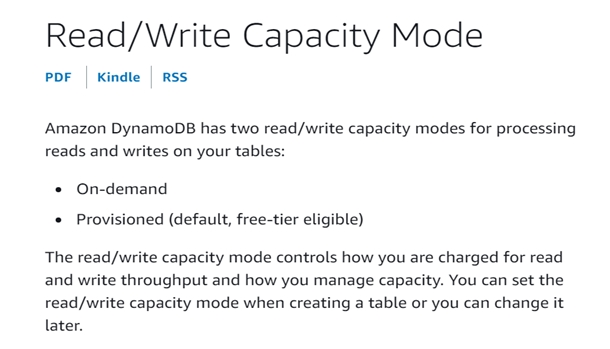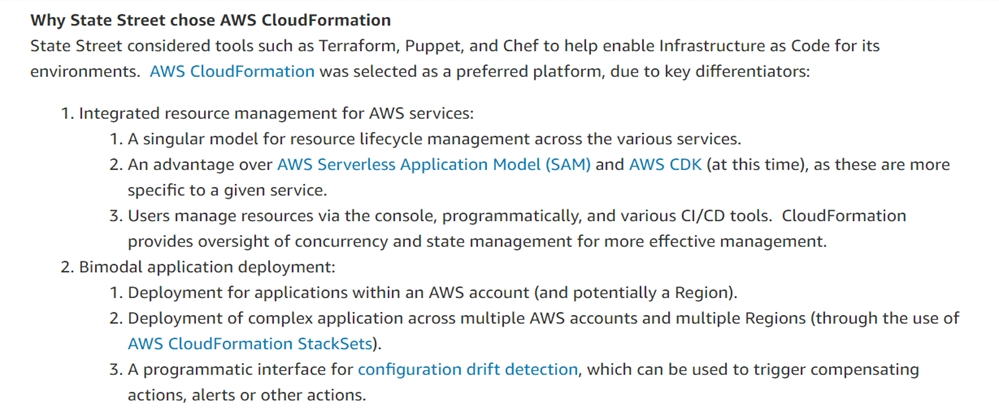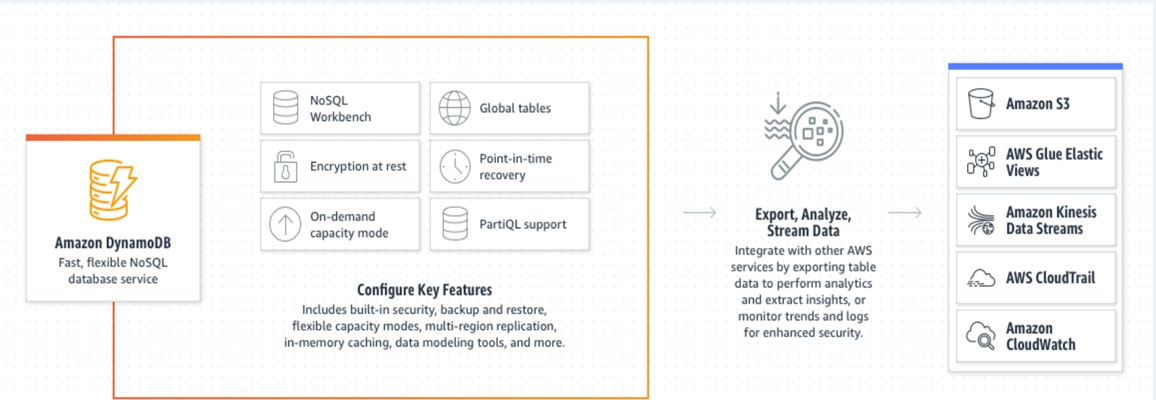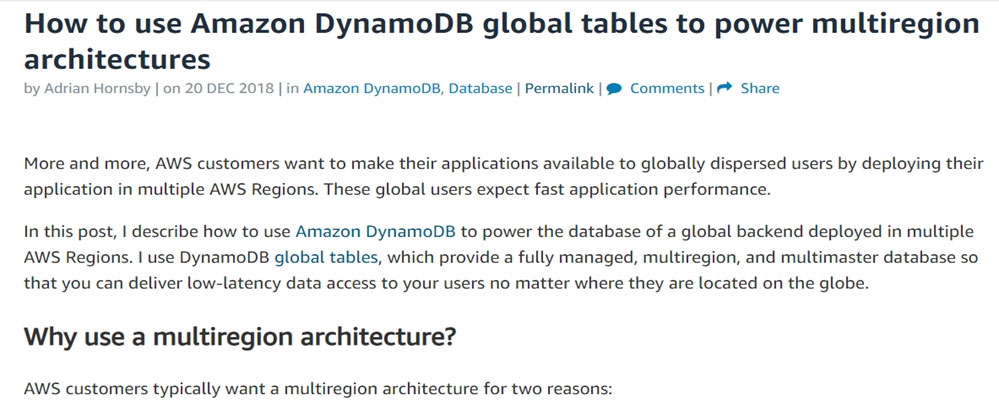A retail company is about to migrate its online and mobile store to AWS. The company's CEO has strategic plans to grow the brand globally. A Database
Specialist has been challenged to provide predictable read and write database performance with minimal operational overhead.
What should the Database Specialist do to meet these requirements?
A
Reference:
https://aws.amazon.com/dynamodb/
A company is closing one of its remote data centers. This site runs a 100 TB on-premises data warehouse solution. The company plans to use the AWS Schema
Conversion Tool (AWS SCT) and AWS DMS for the migration to AWS. The site network bandwidth is 500 Mbps. A Database Specialist wants to migrate the on- premises data using Amazon S3 as the data lake and Amazon Redshift as the data warehouse. This move must take place during a 2-week period when source systems are shut down for maintenance. The data should stay encrypted at rest and in transit.
Which approach has the least risk and the highest likelihood of a successful data transfer?
C
A company is looking to migrate a 1 TB Oracle database from on-premises to an Amazon Aurora PostgreSQL DB cluster. The company's Database Specialist discovered that the Oracle database is storing 100 GB of large binary objects (LOBs) across multiple tables. The Oracle database has a maximum LOB size of
500 MB with an average LOB size of 350 MB. The Database Specialist has chosen AWS DMS to migrate the data with the largest replication instances.
How should the Database Specialist optimize the database migration using AWS DMS?
C
A Database Specialist is designing a disaster recovery strategy for a production Amazon DynamoDB table. The table uses provisioned read/write capacity mode, global secondary indexes, and time to live (TTL). The Database Specialist has restored the latest backup to a new table.
To prepare the new table with identical settings, which steps should be performed? (Choose two.)
AE
Reference:
https://docs.aws.amazon.com/amazondynamodb/latest/developerguide/HowItWorks.ReadWriteCapacityMode.html
A Database Specialist is creating Amazon DynamoDB tables, Amazon CloudWatch alarms, and associated infrastructure for an Application team using a development AWS account. The team wants a deployment method that will standardize the core solution components while managing environment-specific settings separately, and wants to minimize rework due to configuration errors.
Which process should the Database Specialist recommend to meet these requirements?
C
Reference:
https://aws.amazon.com/blogs/mt/aws-cloudformation-signed-sealed-and-deployed/
A company runs online transaction processing (OLTP) workloads on an Amazon RDS for PostgreSQL Multi-AZ DB instance. Tests were run on the database after work hours, which generated additional database logs. The free storage of the RDS DB instance is low due to these additional logs.
What should the company do to address this space constraint issue?
B
A user has a non-relational key-value database. The user is looking for a fully managed AWS service that will offload the administrative burdens of operating and scaling distributed databases. The solution must be cost-effective and able to handle unpredictable application traffic.
What should a Database Specialist recommend for this user?
C
Reference:
https://aws.amazon.com/dynamodb/
A gaming company is designing a mobile gaming app that will be accessed by many users across the globe. The company wants to have replication and full support for multi-master writes. The company also wants to ensure low latency and consistent performance for app users.
Which solution meets these requirements?
A
Reference:
https://aws.amazon.com/blogs/database/how-to-use-amazon-dynamodb-global-tables-to-power-multiregion-architectures/
A Database Specialist needs to speed up any failover that might occur on an Amazon Aurora PostgreSQL DB cluster. The Aurora DB cluster currently includes the primary instance and three Aurora Replicas.
How can the Database Specialist ensure that failovers occur with the least amount of downtime for the application?
B
A Database Specialist needs to define a database migration strategy to migrate an on-premises Oracle database to an Amazon Aurora MySQL DB cluster. The company requires near-zero downtime for the data migration. The solution must also be cost-effective.
Which approach should the Database Specialist take?
D